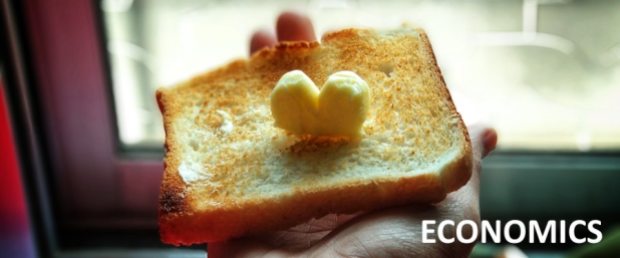
Rice Media’s Ivan takes on what he calls The Boomer’s Mentality on ‘Hard Work’ in Singapore was a refreshing characterisation of the workplace issues faced by the millennials of this island state. I previously wrote about how the boomers taking ‘motivation’ for granted is a big problem for the younger ones. And I shared mostly about the factors that were driving the kind of narrative that we have for our lives and future in Singapore; the fact that our forefathers were driven by a vision of the future that consisted of lifestyle-deltas they could aspire towards but for Singaporeans today, to coax them into adopting that sort of aspiration would almost be demeaning to them. A new sense of purpose must be imbued in them — and it’s not longer about winning the race to be the top <fill in the blank> hub.
And while we did top the Smart City ranking for the second year running, it’s not about chasing league tables. We need to remind ourselves that indicators are by products that are correlated with desired outcomes but not outcomes we are gunning in and of themselves. Our forefathers did not set out to outrank other cities in ‘Smart City ranking’ — they had simple goals of improve water supply, sanitation, access to electricity, greater convenience in banking, access to government services, payments and so on. The question is, what are our simple goals now? What should the millennials aspire to, for their nation if not for themselves? How are we going to improve over the great achievements that our forefathers have scored for us and the successive generations?
I think we are running into what Clayton Christensen calls the ‘Innovator’s Dilemma’ if we are joining big firms, following our forefathers’ models of management and “innovation”, and walking the proven path. In fact, our newer generation of leaders are faced with this challenge. If we have the pressure of being mocked for taking actions that are not ‘needle-moving’, then we risk forgoing potentially disruptive actions with significant impacts that have yet to to be ‘proven’. And this, is where I think millennials will start to play an increasingly important role.
Our role is not to inherit the burden of a legacy or be benchmarked against our forefathers in our level of ‘hunger’ or ‘hard-working-ness’. In fact, I once saw Angela Duckworth post this quote when she was promoting a particular episode of ‘No Stupid questions’:
“Are you working hard to achieve your goals or are you working hard to avoid failure?”
Angela Duckworth (here)
Boom. Mind-blown. The latter point does describe me sometimes in my workplace! And that reveals to me that finding the right motivation and the right sense of purpose is so important. As each successive generation inherits the legacy of the previous, wildly-successful generation, a bit of their ‘working hard’ inevitably become just a matter of trying ‘not to be <fill in this blank>’ rather than ‘to be something’. Because we may have perfectly managed to capture their systems, processes and all manner of operating procedures but their intents, purpose, motivations are often lost with them. We need to find our own versions, and we have to craft our own story.
For me, it means being more selective about the purposes by which you devote your mental and physical resources and talents; and no longer subscribing to the traditional views of what constitutes merit. Perhaps we need to start creating our own industries domestically that creates the kinds of jobs that we want rather than to wait out for the government to draw the MNC investments, or for their direction on what is the next big thing. Maybe it doesn’t matter that the initial product we built is not global or doesn’t scale. How many decades did it take before Laksa was packaged and exported as a product and enjoyed by the west? Did it diminish the economic opportunity or our ability to capture its value? Get informed of our greater economic challenges, and opportunities and craft our lives around it so that we contribute to the narrative of our future rather than being just a passive recipients of circumstances.
The sense of ‘entitlement’ is sometimes a manifestation of high standards millennials have come to expect of others — turn it into a positive by applying that to oneself and to learn to be able to serve others with the standards you expect of others. Use your creativity, exposure to huge amounts of connections in the online world and digital-savviness to create and participate in new things. And I think our narrative is about dethroning the mindset of an ever-growing economic pie, or the anxiety associated with lack of economic growth. Our narrative should be about creating a more helpful, united society that shares with one another, that learnt to shed the neoclassical economic burden, to be a better version of Singaporeans than our forefathers have been, having forged ahead largely for themselves and their family in mind. Now we want to have more of our community in mind, more of even our environment and nature in mind.
We also want to rethink the role of the government; after all, they have actually accomplished quite a fair bit of what they’ve been trying to do by way of improving the livelihoods of general populace. Maybe they can shed some bureaucracy and release more talents into the economy to invigorate it with greater entrepreneurism? Beyond risk-sharing and incentivising entrepreneurship, maybe there’s some rewriting of the social compact where the extreme inequality generated by risks in the marketplace is being mitigated by risk-sharing across cohorts of entrepreneurs? This could be just about successful entrepreneurs hiring the ones who may not have done so well (a la Andrew Yang).
I think more importantly, we want to confess the failings of meritocracy even as we trumpet its successes. And we want to be more conscious as a generation to deal with the negative consequences of ‘meritocracy’ especially the psychological ones. As we de-stigmatise psychological and mental issues, we also want to recognise that building up mental strength of the society overall is as important as building up the physical fitness of the populace.
So let us build not just a smart city of the future; but one that is secure, and confident, not about chasing league tables, KPIs, or GDP, but about genuine well-being of our people. Walk the unproven path, because we need to disrupt ourselves to move on to our next S-curve as a society.
This is part of a series of republished articles from my Medium page because I am worried about the platform ceasing to be. A previous version of this article was published in here a while back.









